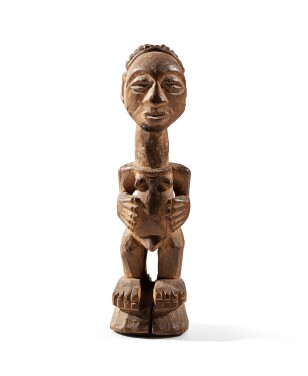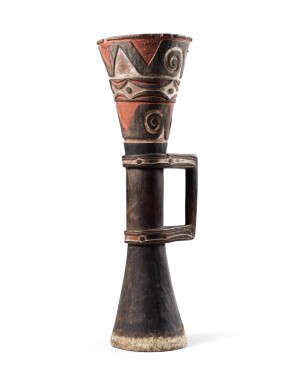S ince modern Western artists became aware of the diverse forms of African and Oceanic sculptures at the beginning of the 20th century, African and Oceanic art have gradually shed its ethnographic categorization and joined the level of all universal art. Masterpieces have been acquired by the largest private and public collections, testifying to the diversity and quality of artistic creations from Africa and Oceania.
From the elegance of the Fang statuary in Gabon to the power of the Songye sculptural works in the Congo, or the technical refinement of the Kota reliquary figures from Gabon, African and Oceanic art offer a wide panorama of creations from highly abstract to deeply powerful depictions of the human figure. Even while these masterpieces are now reaching world record prices it is still quite possible to start a collection of quality African and Oceanic Art by following some of the following ideas.
Dolls and Pulleys
In many African and Oceanic cultures small dolls are commissioned and used by women. Objects used in daily life, they are also functional, accompanying young women who want to get pregnant. Sculpted by blacksmiths, these fertility dolls were then entrusted to the women who decorated and cared for them. These works demonstrate striking aesthetic and artistic qualities, which relate to broad cultural themes. Such is also the case for looms' pulleys, which testify to the endless inventiveness of the artists who created them. The pulleys were made and used by the master weavers, particularly in West Africa, in handlooms; they were visible to all and left carvers much more aesthetic freedom than the works of great statuary. The pulleys illustrate the unique talent of each of these sculptors who transformed everyday objects into sophisticated works of art with great artistic qualities.
Miniature Figures
In addition to the large statuary commissioned by high-ranking figures for the use of entire villages, miniature works of the same sculptural for were carved for individual practice. They have all the aesthetic and artistic qualities of large statues while being much more modest in price. These miniatures are thus a great opportunity to start a collection of classical African and Oceanic art.
Vessels and Furniture: African and Oceanian “Way of Life”
In a whole other scale of value, we find all the creations that take the form of furniture or crockery. These works, which are very affordable, demonstrate an undeniable modernity with great aesthetic qualities. Often commissioned by high-ranking figures, they were made with great care by sculptors, and often show extreme refinement.
Oceanian Weapons
The body of Oceanian weapons is one of the most diverse and sophisticated in the world. From Melanesia to Polynesia, this arsenal encompasses a vast repertoire of different shapes and ornaments.
The exceptional quality of these objects reinforces the fact that, more than mere weapons, they are also prestigious objects, products of the hierarchical societies in which they were created, as well as fascinating works of art.




















